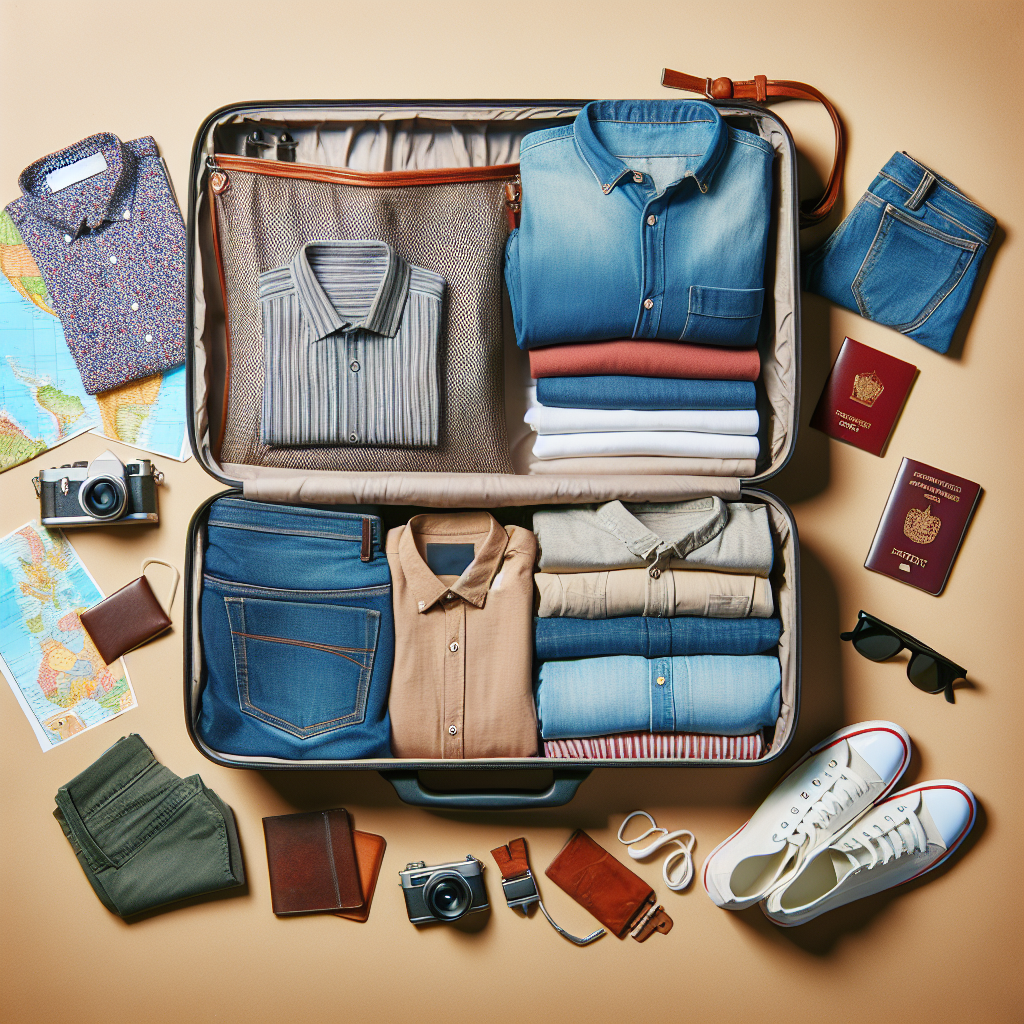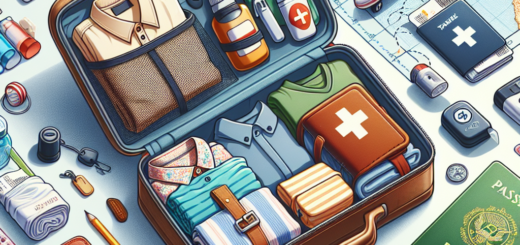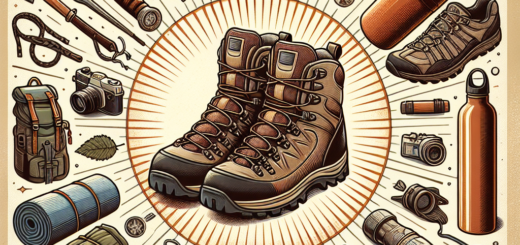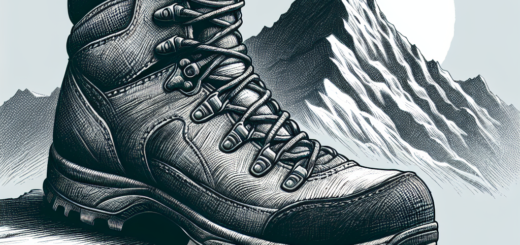How To Pack A Suitcase?

Whether you’re heading out on a travel adventure, planning a relaxing picnic, embarking on a luxurious cruise, or venturing into the great outdoors for a hiking expedition, knowing how to pack a suitcase is essential. With this ultimate guide of tips and tricks, you’ll learn the art of efficient packing, ensuring that everything you need is neatly organized and easily accessible. From maximizing space to preventing wrinkles, we’ll cover all the essential techniques to ensure you’re fully prepared for your next journey. So get ready to pack like a pro and enjoy stress-free travels with our invaluable suitcase packing advice.
Choosing the Right Suitcase
Consider the Size and Type
When choosing a suitcase, it’s important to consider the size and type that will best suit your travel needs. The size of your suitcase will depend on factors such as the duration of your trip and your personal packing preferences. If you tend to pack light, a small to medium-sized suitcase may suffice. However, if you’re a heavy packer or going on a longer trip, a larger suitcase may be necessary.
Additionally, consider the type of suitcase that will meet your specific requirements. There are various options available, such as hard-shell suitcases, soft-shell suitcases, and duffel bags. Hard-shell suitcases provide better protection for your belongings and are often more durable, making them a great choice for air travel. Soft-shell suitcases, on the other hand, are more flexible and usually have more storage pockets and compartments, making them convenient for organized packers. Duffel bags are versatile and lightweight, making them suitable for shorter trips or as carry-on luggage.
Check for Durability
When investing in a suitcase, durability is a key factor to consider. You want a suitcase that will withstand the rigors of travel and protect your belongings. Look for suitcases made from sturdy materials such as polycarbonate or nylon, which can handle the bumps and rough handling they may encounter during your journey.
Inspect the construction of the suitcase, paying attention to details such as reinforced corners and zippers. These features can enhance the durability and longevity of your suitcase. It’s also worth checking customer reviews and ratings of different suitcase brands to ensure you choose one known for its quality and durability.
Look for Compartments and Organization Features
Efficiently organizing your belongings can make a significant difference in the ease of travel. Look for suitcases that offer compartments, pockets, and organization features. These can help you separate and access your items conveniently.
Some suitcases have built-in garment bags or compartments specifically designed for shoes, toiletries, or electronic devices. Having these dedicated spaces can save time and keep your items secure and well-organized. Consider whether you prefer a suitcase with a hard divider or a soft mesh divider inside—both have their advantages, so choose the one that suits your packing style.
Deciding What to Pack
Make a Packing List
Before you start packing, take a moment to create a detailed packing list. This will ensure that you don’t forget any essential items and help you stay organized. Begin by considering the duration of your trip, the activities you’ll be involved in, and the weather conditions at your destination.
Start with the basics such as clothing, toiletries, and personal items. Then, think about any additional items that may be necessary for specific activities such as hiking gear, swimwear, or formal attire. Having a list will prevent you from overpacking or underpacking, and it will also serve as a reference point when repacking at the end of your trip.
Consider the Weather and Activities
When deciding what to pack, it’s crucial to consider the weather and activities you’ll be engaging in during your trip. Check the forecast for your destination and pack appropriate clothing for the expected conditions. If you’re going to a colder climate, ensure you have warm outerwear and layers to stay comfortable. If you’re heading to a tropical location, pack lightweight and breathable clothing.
Additionally, think about the specific activities you’ll be participating in. For outdoor adventures, pack sturdy shoes, sunscreen, insect repellent, and any necessary gear. If you’ll be attending formal events, include appropriate attire. By tailoring your packing to match the weather and activities, you’ll be well-prepared for your trip.
Pack Versatile Clothing Items
To maximize space and minimize the number of items you need to pack, opt for versatile clothing pieces that can be mixed and matched. Choose neutral-colored clothing that can be easily coordinated with other items in your suitcase, allowing you to create multiple outfits from a few key pieces.
Layering is also key when it comes to versatile packing. Pack items that can be layered to adjust to different temperatures. A lightweight cardigan or jacket can provide an extra layer of warmth, while a scarf can be used for both fashion and function. By selecting versatile clothing items, you’ll have more outfit options without having to pack excessive amounts of clothing.
Check for Travel Restrictions on Liquids and Electronics
Before packing any liquids or electronic devices, be sure to check the travel restrictions and guidelines set by the Transportation Security Administration (TSA) or the relevant authorities. Liquids, gels, and aerosols must adhere to the 3-1-1 rule, which states that containers must be 3.4 ounces (100 milliliters) or less, all containers must fit in a single quart-sized plastic bag, and each traveler is limited to one plastic bag.
When packing electronics such as laptops, tablets, or cameras, be mindful of their value and fragility. Consider using a padded protective case to keep them safe during the journey. Additionally, ensure you pack any necessary chargers, adapters, or cables to keep your devices powered throughout your trip.
Organizing Your Belongings
Roll or Fold Clothes
The age-old debate of rolling versus folding clothes continues to divide travelers, but both methods have their merits. Rolling clothes can maximize space in your suitcase, prevent wrinkles, and make items more visible and accessible. This method works well for t-shirts, pants, and other non-bulky garments.
Folding clothes, on the other hand, can keep garments organized and minimize creasing. This technique is best for bulkier items such as sweaters or dress shirts that are more prone to wrinkles. Find a folding technique that works for you, whether it’s the classic fold or a specific folding method that optimizes space.
Use Packing Cubes or Compression Bags
Investing in packing cubes or compression bags can be a game-changer when it comes to organizing your belongings. Packing cubes are zippered fabric containers that help keep your clothes neatly separated and easily accessible. You can sort items by category, such as tops, bottoms, or undergarments, for efficient packing and unpacking.
Compression bags, on the other hand, allow you to squeeze excess air out of your clothing, reducing the overall volume and creating additional space in your suitcase. This is especially useful for bulky items like jackets or sweaters.
Separate Heavy and Light Items
When packing your suitcase, consider distributing the weight evenly to ensure balance and ease of transport. Separate heavy and light items to prevent your suitcase from becoming top-heavy and difficult to maneuver. Placing heavier items at the bottom of the suitcase can help stabilize it and make it easier to roll or carry.
Put heavier items like shoes or toiletry bags towards the wheels of your suitcase, as this can provide better stability. Lighter items, such as clothing or accessories, can be placed on top. By maintaining a balanced distribution of weight, you’ll have a more comfortable experience navigating through airports or train stations.
Use Empty Spaces wisely
Don’t overlook the empty spaces within your suitcase—these areas can be utilized effectively to maximize your packing space. Utilize the inside of your shoes by stuffing socks or other small items inside them. This not only saves space but also helps maintain the shape of your shoes.
If there are gaps between larger items, take advantage of those by fitting smaller items like underwear, scarves, or belts inside. You can also use the side compartments or pockets of your suitcase to store accessories or toiletries. By utilizing every available space, you can optimize the capacity of your suitcase.
Maximizing Space
Utilize the Inside of Your Shoes
When it comes to maximizing space in your suitcase, don’t forget about the inside of your shoes. This often-overlooked area can be used to store small items such as socks, underwear, or even rolled-up belts. By tucking these items inside your shoes, you can make efficient use of the available space while also helping your shoes maintain their shape.
Consider using shoe bags to keep your footwear separate from the rest of your belongings, preventing any dirt or debris from getting on your clothes. This also makes it easier to locate your shoes when you need them, especially if you’re staying in multiple accommodations during your trip.
Stuff Socks and Undergarments in Empty Spaces
One of the simplest and most effective space-saving techniques is to utilize the empty spaces within your suitcase. Rather than leaving gaps or air pockets, fill them with smaller items such as socks, undergarments, or rolled-up accessories like scarves or belts. This not only helps to maximize space but also keeps your belongings more compact and organized.
An alternative method is to pack your socks and undergarments inside a dedicated packing cube or a small bag. This keeps them separate from your other items and makes it easier to locate them when needed. Plus, it helps to enforce the efficient use of space within your suitcase.
Place Small Items in a Toiletry Bag
Toiletries and small items can easily become scattered or lost within your suitcase. To keep them organized and prevent spills, use a dedicated toiletry bag for these items. This not only helps to consolidate your toiletries in one place but also makes it easier to locate them when needed.
Place items like toothpaste, shampoo, or lotion in leak-proof travel-sized containers to comply with TSA guidelines. A clear toiletry bag is particularly useful for air travel, as it allows security personnel to quickly and easily inspect your liquids.
Use the Bundle Packing Method
The bundle packing method is a popular technique for maximizing space and minimizing wrinkles. It involves wrapping your clothing tightly around a core item, such as a rolled-up t-shirt or a small packing cube, to create a compact bundle.
Start by laying your largest and least wrinkle-prone clothing item flat, such as a pair of pants. Then, layer additional garments on top, folding and rolling them tightly. This method can be particularly useful for business travelers or those attending formal events, as it helps keep clothing items neat and wrinkle-free.
Packing Fragile Items
Wrap Breakable Items in Clothing or Bubble Wrap
When packing fragile items, it’s crucial to provide sufficient cushioning to protect them from damage. Wrap breakable items such as glassware, ceramics, or delicate souvenirs in clothing items like t-shirts or sweaters. This creates a protective barrier between the fragile item and the hard surfaces of your suitcase.
Alternatively, use bubble wrap or packing paper to wrap fragile items individually. Bubble wrap provides excellent cushioning and helps absorb any impact during transit. Be sure to secure the wrapping with tape or rubber bands to keep it in place.
Use Socks or Scarves to Provide Cushioning
To further protect fragile items, use your socks or scarves as cushioning material. Place them strategically between delicate items or wrap them around smaller objects to prevent them from moving and colliding during transport. Not only does this method help protect your fragile items, but it also helps to save space by utilizing items you would be packing anyway.
If you have particularly delicate or valuable items, consider investing in specialized travel cases or padded bags specifically designed for protecting fragile objects. These cases often have foam inserts or dividers to secure your items and minimize the risk of damage.
Pack Fragile Items Toward the Center of the Suitcase
The placement of fragile items within your suitcase is crucial for ensuring their safety during travel. Pack fragile items toward the center of your suitcase, surrounded by softer or less breakable items. This helps provide a cushioning effect and reduces the risk of fragile items being crushed or punctured by heavier items.
Avoid placing fragile items near the edges or corners of your suitcase, as these areas are more susceptible to impact and external pressure. By keeping fragile items well-protected and insulated within your suitcase, you’ll have peace of mind knowing they’re less likely to suffer damage.
Securing and Fastening Your Suitcase
Use TSA-Approved Locks
To secure your suitcase and protect your belongings, it’s advisable to use TSA-approved locks. These locks are recognized and can be easily opened by TSA agents for security inspections, eliminating the risk of your lock being cut or damaged. TSA-approved locks also provide peace of mind, knowing that your suitcase is secure during your journey.
Choose locks that are sturdy and tamper-resistant. Combination locks are convenient, as they eliminate the need to carry keys. Set a memorable combination, and be sure to keep a note of it in case you forget.
Double-check All Zippers and Fastenings
Before you begin your journey, double-check all zippers and fastenings on your suitcase to ensure they are working properly. Test each compartment and pocket to verify that they open and close smoothly. This ensures that your belongings will remain secure and prevents any unexpected surprises during your trip.
If any zippers or fastenings are damaged or malfunctioning, consider getting them repaired or replaced before you travel. It’s better to address these issues beforehand to avoid potential inconvenience or damage to your belongings.
Attach a Luggage Tag with Your Contact Information
To help identify your suitcase and provide a means of contact in case it gets lost, attach a luggage tag with your name, phone number, and email address to the outside of your suitcase. This allows airline staff or fellow travelers to reach out to you if your suitcase is misplaced or mistakenly picked up by someone else.
It’s also a good idea to include your contact information inside your suitcase, where it can be easily seen. This provides an extra layer of security in case the external luggage tag is removed or damaged. Ensure your contact details are up to date and legible to facilitate communication in case of any mishaps.
Managing Toiletries and Cosmetics
Pack Travel-Sized Toiletries
Travel-sized toiletries are a practical and convenient option for minimizing bulk and complying with airline restrictions on liquids. Purchase travel-sized versions of your favorite shampoo, conditioner, lotion, and other toiletries, or transfer your regular products into reusable travel-sized containers.
By opting for smaller sizes, you not only save space but also reduce the risk of spills and leaks. Additionally, travel-sized toiletries can be used up during your trip, lightening your load as you go.
Place Liquids in Leak-Proof Containers
To prevent any potential spills or leaks, always store liquids in leak-proof containers. Many toiletry kits come with a clear, zippered plastic bag that adheres to TSA guidelines for carrying liquids on flights. Place your liquid containers, such as shampoo, conditioner, or lotion, inside this bag to contain any potential leaks and make security screening easier.
To provide an extra layer of protection, you can also unscrew the caps of your liquid containers, place a small piece of plastic wrap over the opening, and then firmly reattach the cap. This helps create a seal and further reduces the risk of leakage during transit.
Separate Makeup and Other Cosmetics into a Clear Bag
When packing your cosmetics, separate them from other toiletries and place them in a clear, zippered bag. This ensures that any spills or leaks will be contained within the bag and not spread to your clothing or other belongings.
Consider using travel-sized makeup containers or palettes to minimize the amount of space occupied by your cosmetics. Look for products that have multiple functions, such as a lip and cheek tint, to further streamline your makeup routine while traveling. By keeping your cosmetics organized and easily accessible, you can save time and avoid any unnecessary mess.
Keeping Valuables Safe
Carry Valuables in Your Carry-On Bag
When it comes to carrying valuables such as jewelry, electronics, or important documents, it’s best to keep them with you in your carry-on bag. This ensures that they are within your sight and reduces the risk of loss or theft.
Make sure to pack your valuable items in a secure and easily accessible location within your carry-on bag. Consider using a small travel organizer or pouch to keep them organized and protected from damage. This way, you’ll have peace of mind knowing that your precious belongings are always within reach.
Consider Using a Money Belt or Hidden Pouch
For additional security, you may want to consider using a money belt or a hidden pouch worn under your clothing. These discreet accessories provide a safe and concealed way of carrying cash, credit cards, or passports while you’re on the move.
Money belts or hidden pouches are particularly useful in crowded areas or when traveling to destinations known for pickpocketing or theft. Just remember to remain vigilant and discreet when accessing these hidden compartments, ensuring that you’re not drawing any attention to your valuables.
Dealing with Dirty Laundry
Pack a Laundry Bag or Plastic Bag for Dirty Clothes
To prevent your clean clothes from mixing with your dirty laundry, pack a separate laundry bag or a plastic bag. This allows you to keep your suitcase organized and your clothes fresh.
As you wear items throughout your trip, simply place the soiled garments in the designated laundry bag. This ensures that your clean clothes remain fresh and ready to wear, while also keeping your suitcase free of any unpleasant odors or stains.
Use Travel-Sized Stain Removers or Laundry Detergent Packets
Accidents happen, and spills or stains on your clothing are not uncommon while traveling. Pack travel-sized stain removers or laundry detergent packets to tackle any unexpected stains. This allows you to address stains promptly and prevent them from setting.
These compact stain removers or detergent packets are easy to carry and can be used to treat stains even while on the go. Simply follow the instructions on the packaging to effectively remove stains and keep your clothes looking fresh.
Checking for Essential Travel Documents
Ensure You Have Your Passport and ID
Before embarking on your journey, double-check that you have your passport and any necessary identification documents. Ensure that your passport is valid for the duration of your trip and check the entry requirements for your destination to determine if additional documentation or visas are needed.
It’s also a good idea to make photocopies or take pictures of your passport and ID to have digital backups in case of loss or theft. Store these copies securely online or in a separate location from your physical documents.
Carry Printed or Digital Copies of Travel Itinerary and Confirmations
To stay organized and prepared throughout your trip, carry printed or digital copies of your travel itinerary, hotel confirmations, and any other important documents. These can include flight details, rental car reservations, or tour bookings.
Having easy access to this information can be helpful for reference or in case of any unexpected circumstances. Keep these documents in a separate folder or use a travel organizer to keep them neat and easily accessible.
By following these tips and tricks, you’ll be well-prepared to pack your suitcase efficiently, protect your belongings, and have a stress-free travel experience. Remember to consider the size and type of suitcase that suits your needs, make a packing list, and organize your belongings strategically. Maximize space, secure your suitcase, and pack your toiletries thoughtfully. With proper planning and organization, you can ensure that your trip is off to a smooth and enjoyable start. Happy travels!



